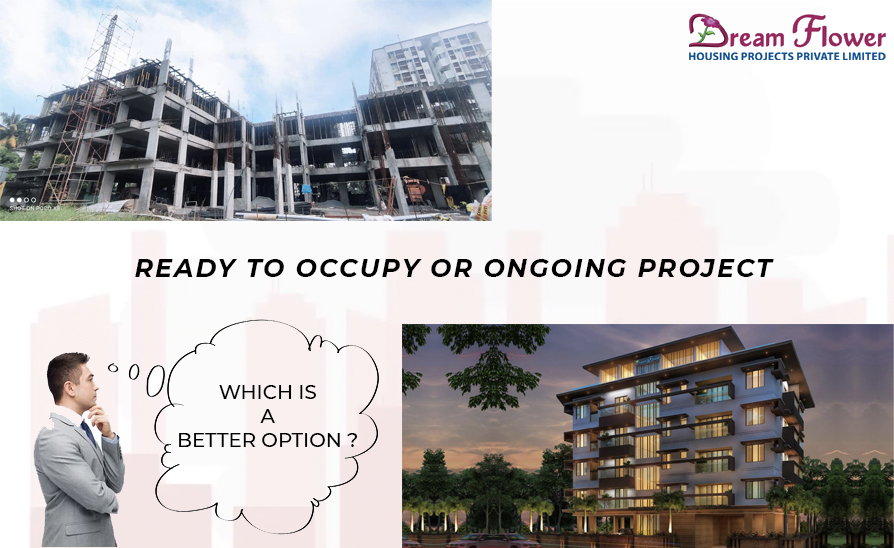If you are considering purchasing a home, one of the first decisions you must make is whether to purchase a ready-to-occupy or a flat in a building that is still under construction. Choosing the right term would depend largely on the state of your finances and your needs. Each of these categories of properties has its advantages and disadvantages. Under construction denotes a building, structure, or project that is currently under construction and not yet complete and a ready-to-move property has been built and is ready for occupancy.
Under construction projects
An under-construction residence in every real estate business all over the nation is undoubtedly less expensive than a ready-to-move unit in every other plan of comparable size, extent, place, and luxuries. We could even customize the home as needed in an under-construction venture and we have the space to choose tiles, sanitary, painting, etc. However, this is not possible when buying a ready-to-occupy home as it is already designed and finished.
It is also very important that the installment payment options between18-21providing you the flexibility to minimize loans. In contrast, you will have to complete the total contract within the maximum limit of one month in a ready-to-occupy home. The initial price from the construction company is the best offer in an under-construction project. Whereas, in ready-to-occupy, you will need to pay 30-40% more than the launch price.
With an under-construction project, you can make a margin in resale, while there is no such option is available under a ready-to-occupy project. An under-construction home favors you in many ways, like, if you choose a tranching EMI option, you will get a good amount of savings in the loan itself. It is worth noticing that the registration expenses are only 7% for an under-construction project.
Ready to Occupy
One of the most favorable things under a ready-to-occupy home is its possession can be taken immediately. There is no need for time and much effort. Comparatively, there are no risk elements are included while choosing a ready-to-occupy option. And also you can give it on rent immediately.
The most important feature of a ready-to-move facility is that you understand exactly what you’re getting. Before investing in a ready-to-move facility, the acquirer can inspect the quality of the project. The purchaser is also reassured that the residential building meets precisely the highlights and luxuries described in the sales document by the property developer.
A ready-to-move-in residence provides the privilege of immediate occupancy with no burdens and no annoyances. Environments, which include social and economic infrastructure, are always better managed near ready-to-move-in divisions than under-construction residences, which are typically placed in developing housing clusters. For ready-to-move-in apartments, there are excellent schools, universities, healthcare facilities, commercial centers, shopping areas, organizations, and transport networks.
We can see that both ready-to-move-in and under-construction residences have advantages. Each has some drawbacks. You must consider the advantages and disadvantages based on your condition and objectives to achieve the right choice.

